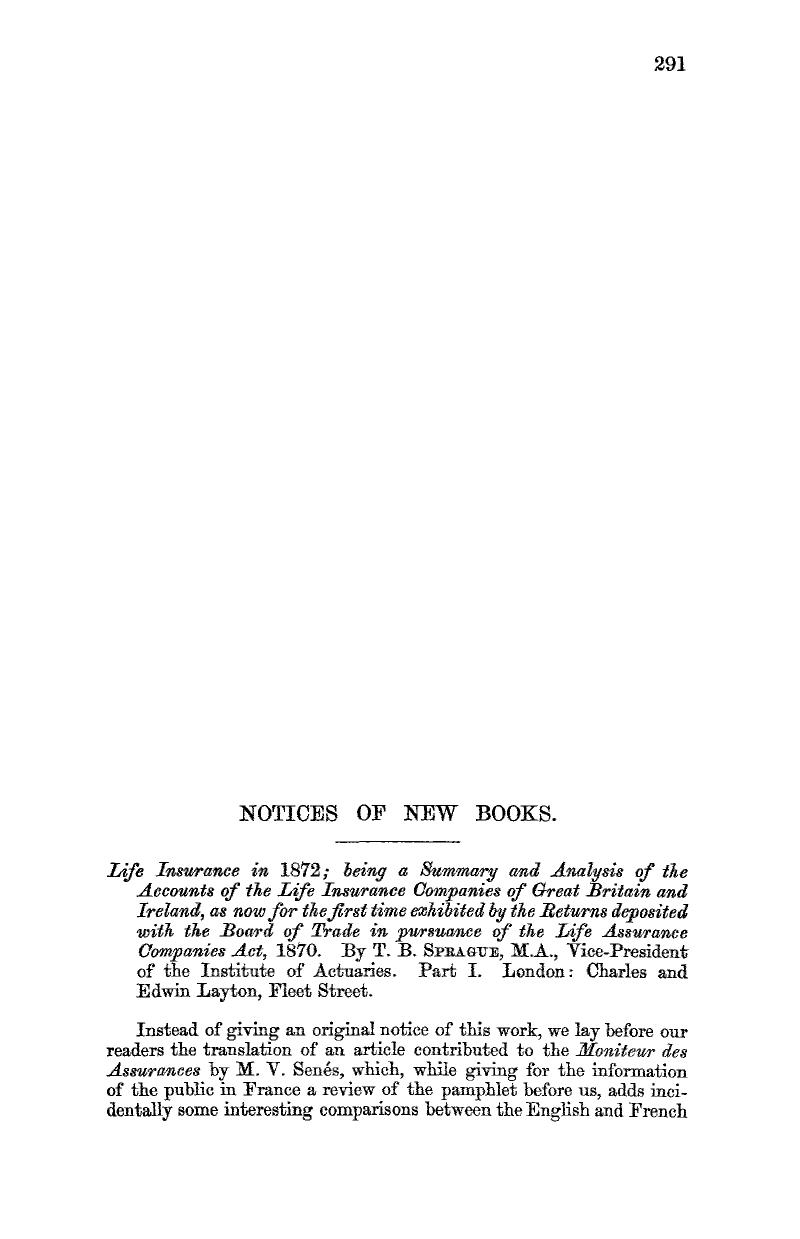No CrossRef data available.
Article contents
Life Insurance in 1872; being a Summary and Analysis of the Accounts of the Life Insurance Companies of Great Britain and Ireland, as now for the first time exhibited by the Returns deposited with the Board of Trade in pursuance of the Life Assurance Companies Act, 1870. By T. B. Sprague, M.A., Vice-President of the Institute of Actuaries. Part I. London: Charles and Edwin Layton, Fleet Street.
Published online by Cambridge University Press: 18 August 2016
Abstract

- Type
- Notices of New Books
- Information
- Copyright
- Copyright © Institute and Faculty of Actuaries 1873
References
page 294 note * It is scarcely necessary to point out that our contemporary is here slightly inaccurate; as the Act makes no reference whatever to the presentation of the accounts to the shareholders, and the nine months are reckoned from the day to which the accounts are made up.—ED. J. I. A.
page 294 note † This is also a slight inaccuracy: the year to which the accounts relate being, in most cases, 1870.—ED. J. I. A.
page 296 note * Our contemporary has here fallen into a rather surprising misconception; overlooking the circumstance that by far the greatest part of the dividends and bonuses to shareholders, £507,743, consists of interest on their capital, which is, of course, no part of the profit of the companies, but is actually yielded by the mortgages or other securities on which the capital is invested. The total funds of the companies at t h e beginning of the year being £90,846,770, and the interest received in the year £4,090,437, it follows that the average rate of interest is almost exactly 4½ per-cent. The shareholders' capital, £10,376,321, would at this rate produce a yearly interest of £466,935, and it is only the excess over this, or £40,808, which is the shareholders' proportion of profits; and this is only 8 per-cent of the amount appearing in the table as cash bonuses to policyholders, which, it is to be observed, is quite independent of the probably much larger amount of bonus applied to increase the sum assured.—Ed. J. I. A.
page 297 note * The comparison here made is not strictly correct. The total assets of £109,610,235, include not only the share capital and life funds at the end of the year, £93,456,643, as given in Table I, but also the fire and other funds of £12,278,861, as given in Table II ; in addition to other sums, such as claims admitted but not paid, &c. The interest to be compared with this total should be, therefore, the sum of those given in Tables I and II, £4,090,437 and £522,686, together £4,613,123; and the average rate of interest is then found to be £4.4s. 2d. per-cent. Bat, in our opinion, the more correct course will he to compare the total "funds at the beginning of the year,” £90,846,770, as given in Table I, and £11,766,690, as given in Table II, together £102,613,460, with the total interest, £4,613,123; and this raises the average rate of interest to £4. 9s. 11d. per-cent.—Ed. J. I. A.




